

Mr. Thomas Frebel (Chef)
ー
You just showed me vegetable flakes which is not bonito flakes, and I also tasted dishes made using koji (malt).
Mr. Frebel, what is it about koji that you find so interesting?
Mr. Thomas
The biggest reason why I am so fascinated by koji is that it has such a wide range of applications. There are so many different types, I don’t even know how many there actually are all together.
Koji’s ability to open up worlds of different flavors is unbelievably wonderful. I even think that koji’s actions could be called cooking.
Images of trial-and-error testing of potential menu items cover the walls and windows of INUA’s kitchen laboratory.
ー
For example, there must be times when you change flavors using general condiments and times when you change flavors using koji; are there moments when you think, “Here, we could only use koji”?
ー
It’s difficult to explain differences between flavors in words, but using the most easy-to-understand example, we make barley koji using a koji mold called Nihon Koji Kabi (Aspergillus oryzae). We then soak the barley koji in oil to infuse the oil with the aroma of the barley koji.
That is one of our special skills! We use the actions of enzymes that break down barley’s structure, making it easier for the substances inside the barley to seep out, so the aroma of the barley koji transfers really well to the oil. It’s possible to break down the delicious substances within various food ingredients and make them even more delicious or change their properties slightly.



ー
Mr. Frebel, how do you use this oil in cooking?
Mr. Thomas
The really wonderful thing about this barley koji-scented oil is that it can produce complex and deep flavors in the same way as miso bean paste and soy sauce do, even though it has no saltiness, sweetness, or acidity. When you use this oil in a simple vegetable dish, it is possible to further draw out the vegetables’ natural flavors without adding soy sauce, salt or miso, making the umami taste and flavor more complex. You could say that for us, koji is no longer just a simple condiment but rather a food ingredient in its own right.
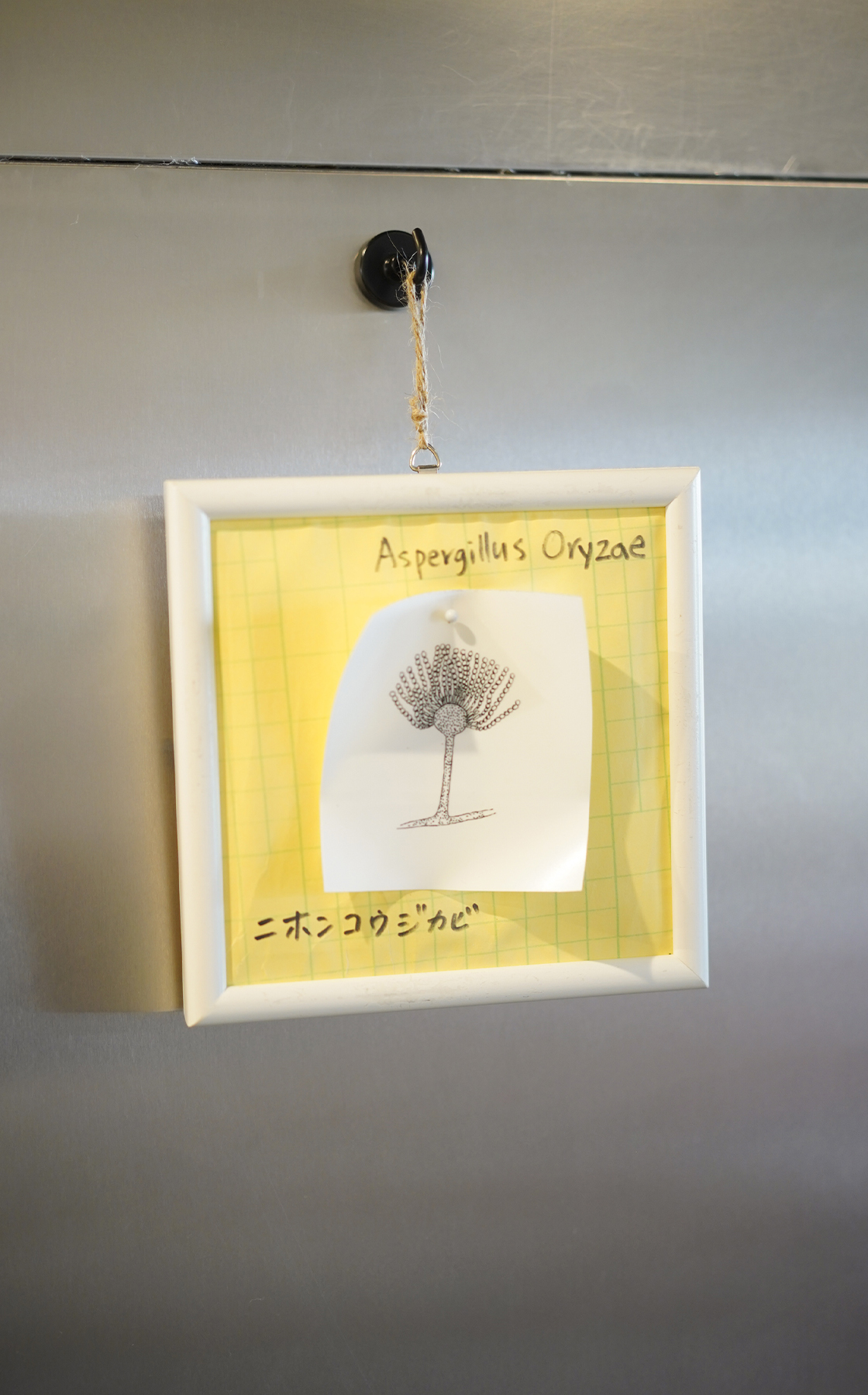

Mr. Thomas
Let me also show you the devices that we use to make barley koji—these seven fermenters. They can all be set at the appropriate temperatures and humidity.
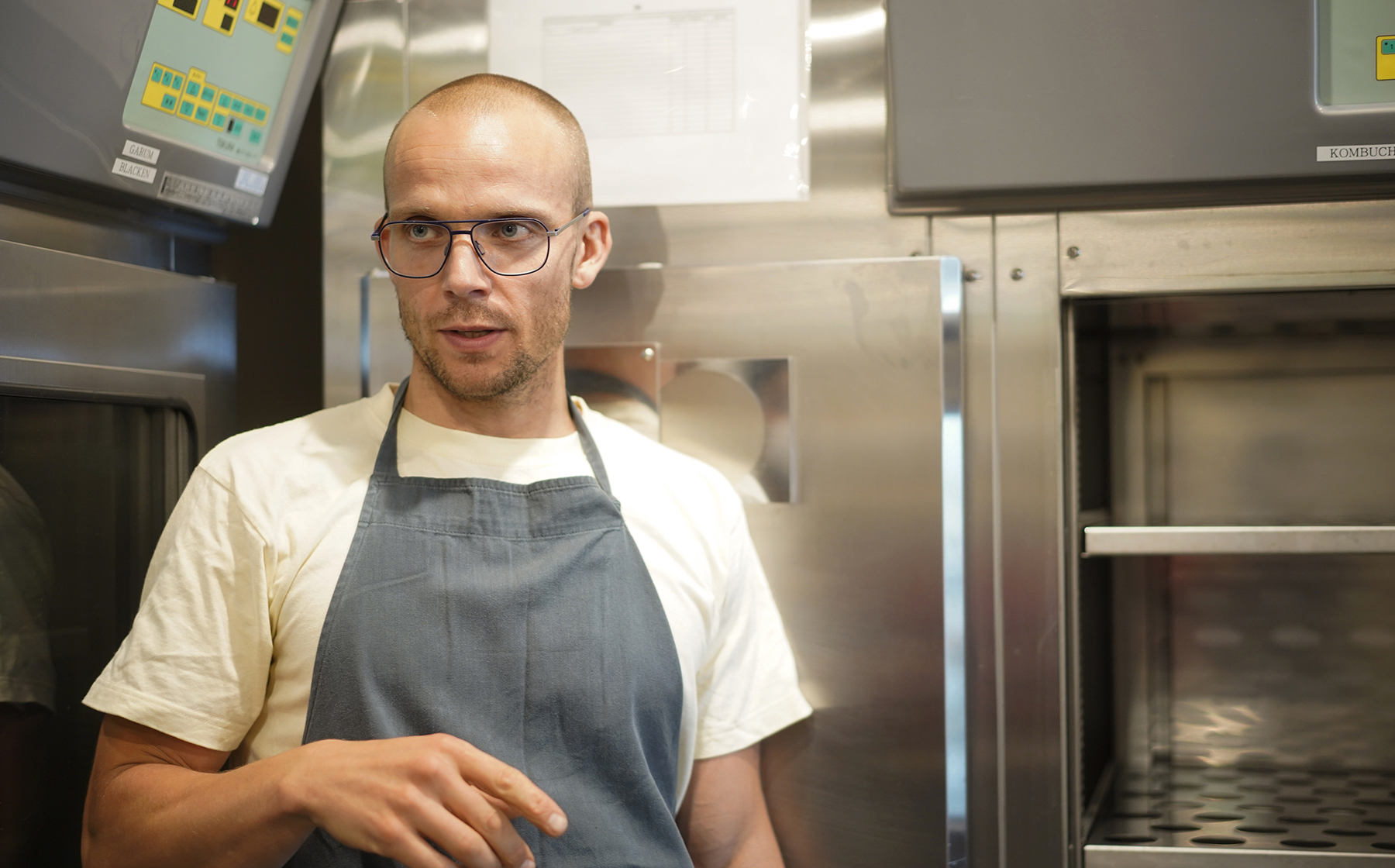

ー
At a glance, they look like refrigerators, but they are all set at different temperatures. One is set at 28℃; another is set at 60℃.
Mr. Thomas
Have you heard of black garlic, which is mainly produced in Aomori Prefecture? The process for making barley koji is essentially the same as that used for making black garlic. First of all, fresh barley koji that has been slowly fermented over three days is sealed in a vacuum pack. Next, unlike with the first fermentation, the barley koji is placed in a fermenter at a high temperature. Then, the color of the barley koji turns brown.
That is what’s known as the Browning Reaction. Food ingredients are broken down through the actions of enzymes, and the resulting sugars and amino acids react, creating a brown-colored substance. The colors of miso bean paste and soy sauce are also born through this reaction. It’s also referred to as the Maillard reaction.
Mr. Thomas
We make blackened barley koji into a paste and serve it as a dessert mixed with ice cream. We’ve just finished making a batch of this flavor ice cream. Please, have a taste!
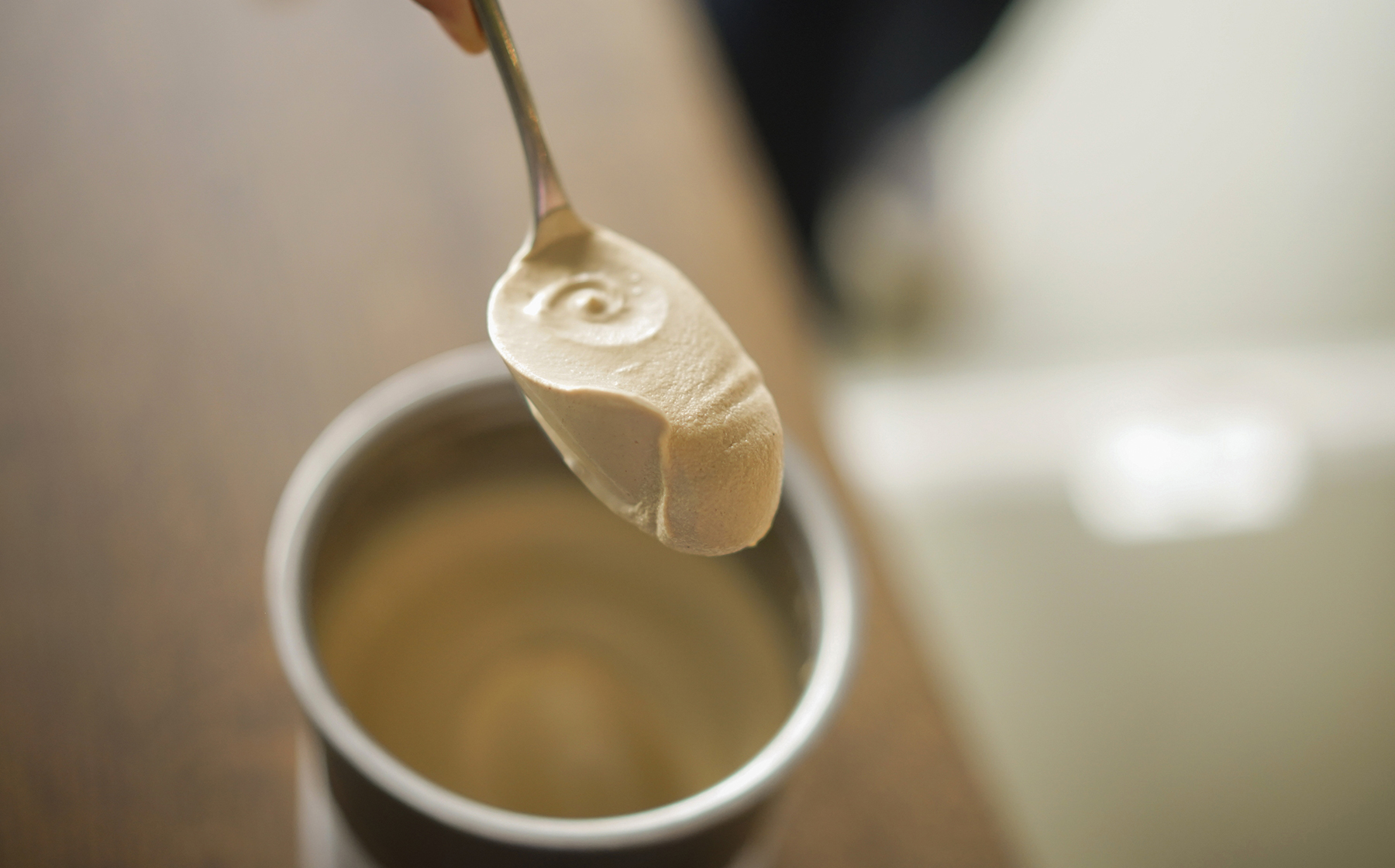

ー
This ice cream not only has an exquisitely textured softness and temperature, but it also tastes something like the miso soft serve ice cream that I have previously tasted—refreshing, with a gently fragrant aroma like that of coffee. I was really surprised at how delicious it tastes!
ー
When did you first realize the depth of the fermentation process?
Mr. Thomas
I first had the experience of tasting koji and miso bean paste when I was working at Noma in Denmark. This was in 2012.
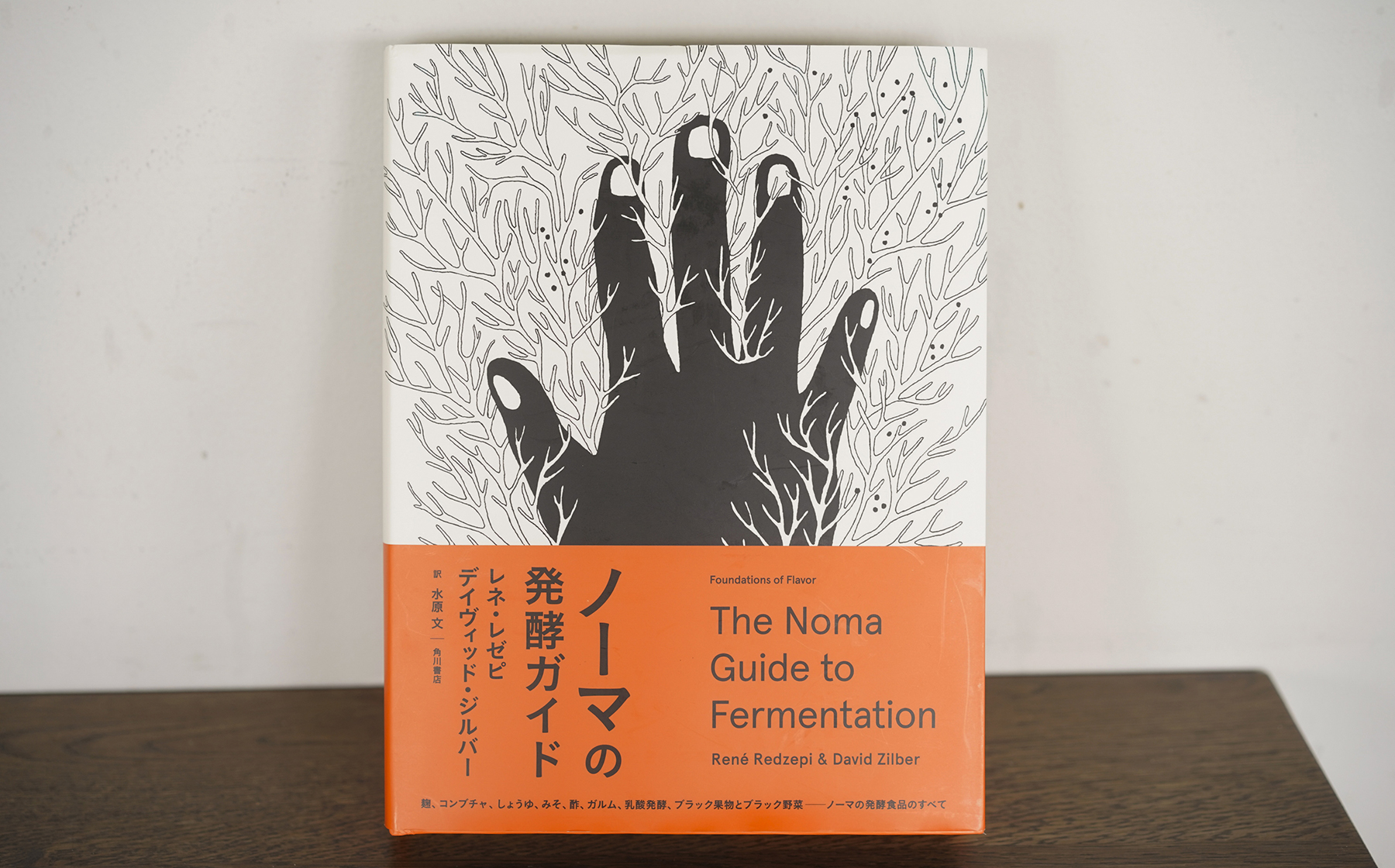

Mr. Thomas
With just the one word “fermentation,” I think that there are many people who are not aware of exactly what is being fermented. For example, coffee and chocolate are also fermented foods, but there are many people who do not know this. If you think of it that way, then, many people are already captivated by fermentation.
ー
Has there traditionally been cooking methods in Europe that utilize koji or fermentation?
Mr. Thomas
Within fermented feed culture in Europe, you have foods such as cheese, charcuterie (processed meats such as dry-cured ham and salami), sour breads, dairy products such as yogurt, beer, and aquavit (a distilled spirit made from potatoes). I’ve never heard of koji being used traditionally in Europe, although there is a tradition of growing mold in cheese and using mold to cure meats. I don’t know of any examples where grains such as soybeans or barley are fermented as they are in Japan.
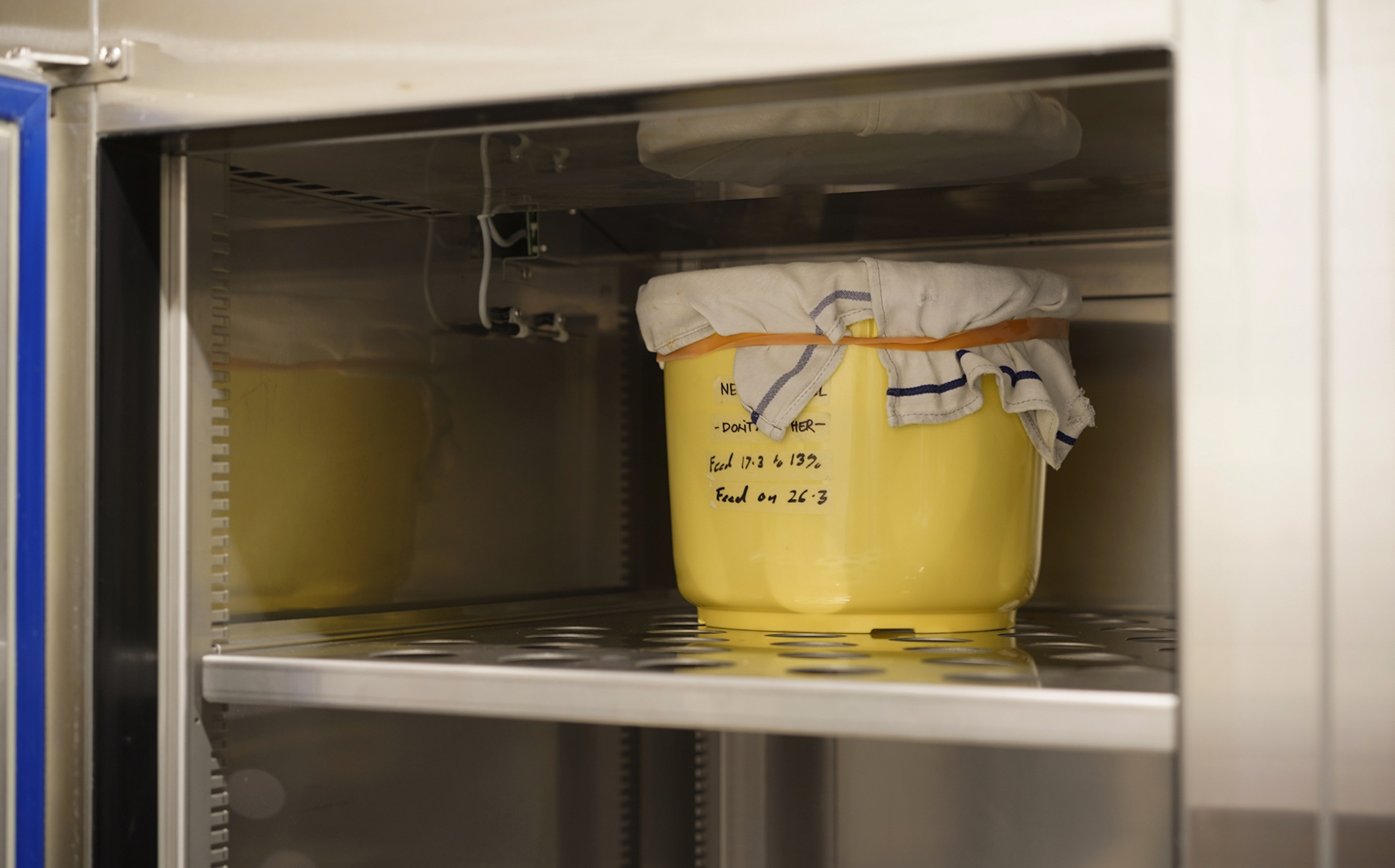

Mr. Thomas
After coming to Japan, I visited the Aramasa Brewery in Akita. They taught me that even using the same koji mold, it is possible to produce a myriad of different flavors utilizing slight differences in the environment handling the koji. For example, the temperature, humidity, and heating method all influence the flavor of the finished product. There is even a difference in the flavors produced when fermentation is begun at a low temperature, after which the temperature is raised by one degree for finishing, and when fermentation is begun at a higher temperature, after which the temperature is lowered by one degree for finishing. This is truly wonderful work.
ー
I’d like to ask you about your own job. In the documentary film Ants on a Shrimp (Noma Tokyo: Sekai Ichi no Resutoran ga Nihon ni Yatte Kita) (directed by Maurice Dekkers), you said that you wanted to see what would be created when the Noma team threw their own aesthetics into a completely new culture. What did you mean by your “aesthetics”?
Mr. Thomas
My own aesthetics involves recreating as faithfully as possible phenomena occurring in Mother Nature, in the natural world, and to utilize these in cooking.
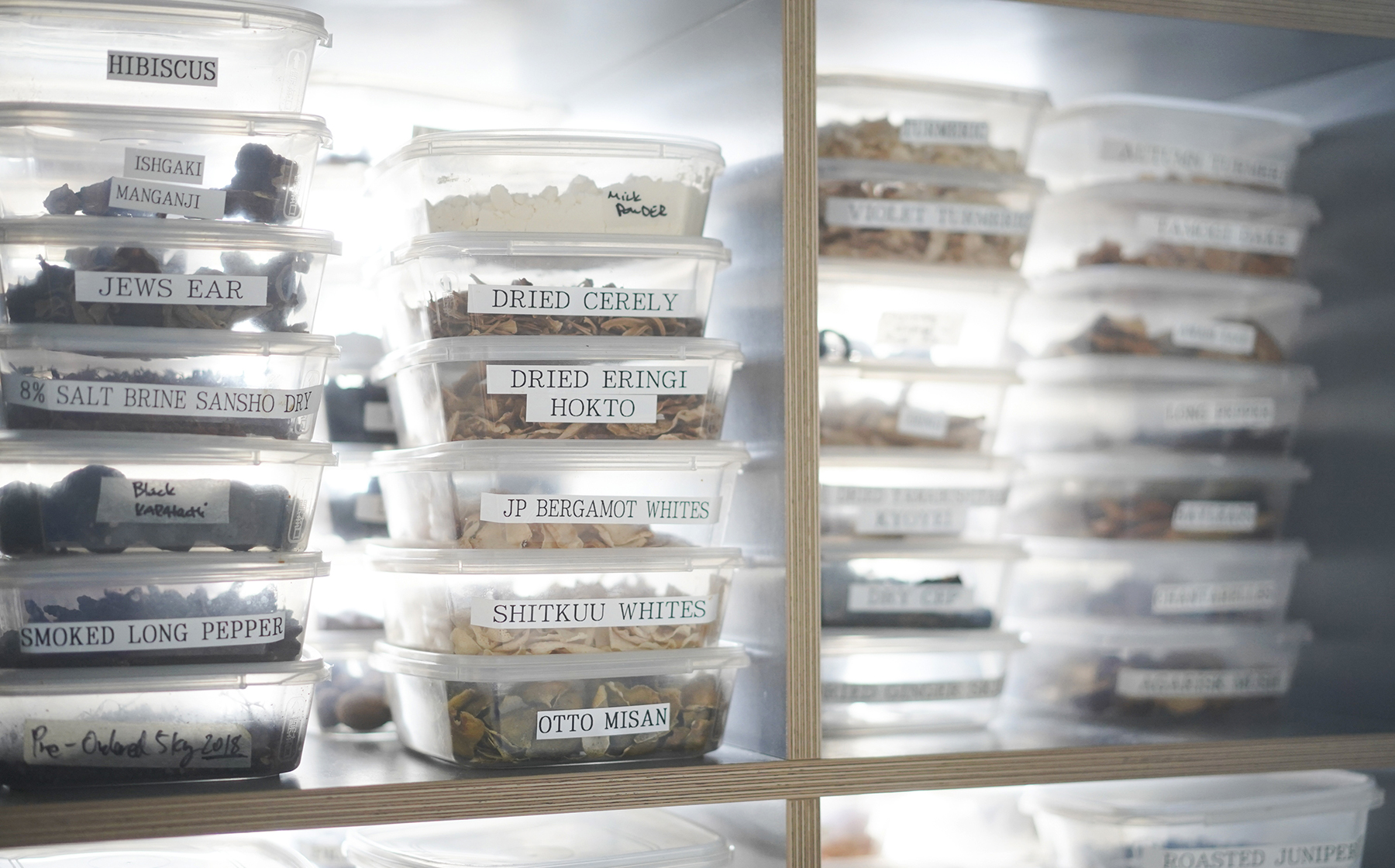

Mr. Thomas
In the past, I have traveled to Arctic Norway (the northernmost parts of Norway that lie above the Arctic Circle). A diver friend harvests some razor clams from the ocean floor, then opened them on the boat, where we ate them as is. Of course, the clams were still raw. Naturally, the taste of the clams we ate that time was incredibly special. Some people may not enjoy raw seafood, but ahh, the taste and texture of those raw clams! Their sweetness, the saltiness that only the ocean can provide! The taste of eating these flavors in an environment surrounded by snow cannot be recreated in a restaurant, but I believe that it is possible to create dishes that bring guests close to that experience.


ー
The experience of sensing nature itself through the taste of freshly harvested foods is just as you said.
Mr. Thomas
In order to enjoy food ingredients in peak condition, although there are exceptions to the rule, 90% of the time you have to go to the local area where those food ingredients are produced. Ingredients that are delivered to the restaurant inevitably lose some of their quality. We go on research trips to production areas so that we can get to know the very best flavors.
For example, please imagine a vine of tomatoes that has been receiving ample sunshine for three days. If it hasn’t rained, the moisture will probably have evaporated, making the fruit a little dry. Let’s pick the tomatoes at around 4:00 p.m. and eat them. The afternoon sun makes the tomatoes slightly warmer than your own body temperature; they are sweet and juicy, with some acidity as well, and the pulp feels fleshy. The smell of the vine probably remains on your hands. I dare say that tomatoes eaten in this way are the ultimate tomatoes.
Tomatoes picked in a field during the summer holidays—there are probably many people who have fond memories of that slightly grassy smell. Naturally, we enzymes are also involved in creating this special just-picked flavor.
Mr. Thomas
As a chef, my job is to lift the flavor of the food ingredients delivered to the restaurant to their best condition. The degree to which ingredients’ best condition can be recreated depends on our skillfulness. If we are able to get extremely close to this condition, we decide that the dish can be served to our guests. If the taste is below best condition, we cannot serve it to guests, and so sometimes I feel very frustrated. The desire to serve a dish to guests comes in a momentary opening that is very, very difficult to enter.
Mr. Frebel, I sense that you are using the actions of koji mold in your efforts to recreate the freshness of freshly picked vegetables, or the delicious taste of freshly caught seafood.
ー
What challenges would you like to take on in the future?
Mr. Thomas
I have a big dream that involves using fermentation and enzymes—this is deeply related to the issue of food waste. I am sure that many people know about composters, which are devices that turn food waste into nutritionally rich soil through the power of enzymes. My dream is for humankind to someday completely understand the mechanisms of fermentation and breakdown enzymes, enabling us to turn food taste into not only soil but also fermented paste. This is an edible paste rich in nutritional value and vitamins, and I think it would be great if this paste could be provided to countries suffering from poverty.
That really is a wonderful dream…. We’d absolutely like to help out by utilizing the power of enzymes!
ー
That really is a terrific dream! If you have any other dreams that are not related to enzymes or fermentation, would you mind telling us about them?
Mr. Thomas
First of all, what I personally would like to do is continue to inspire people. Secondly, the word “educate” might be going too far, but I would like to pass on my knowledge to others. Lastly, I want to make various different people happy through food and drink. I think that these three make a terrific combination, since they would surely be beneficial for not only our customers but also the staff with whom I work.
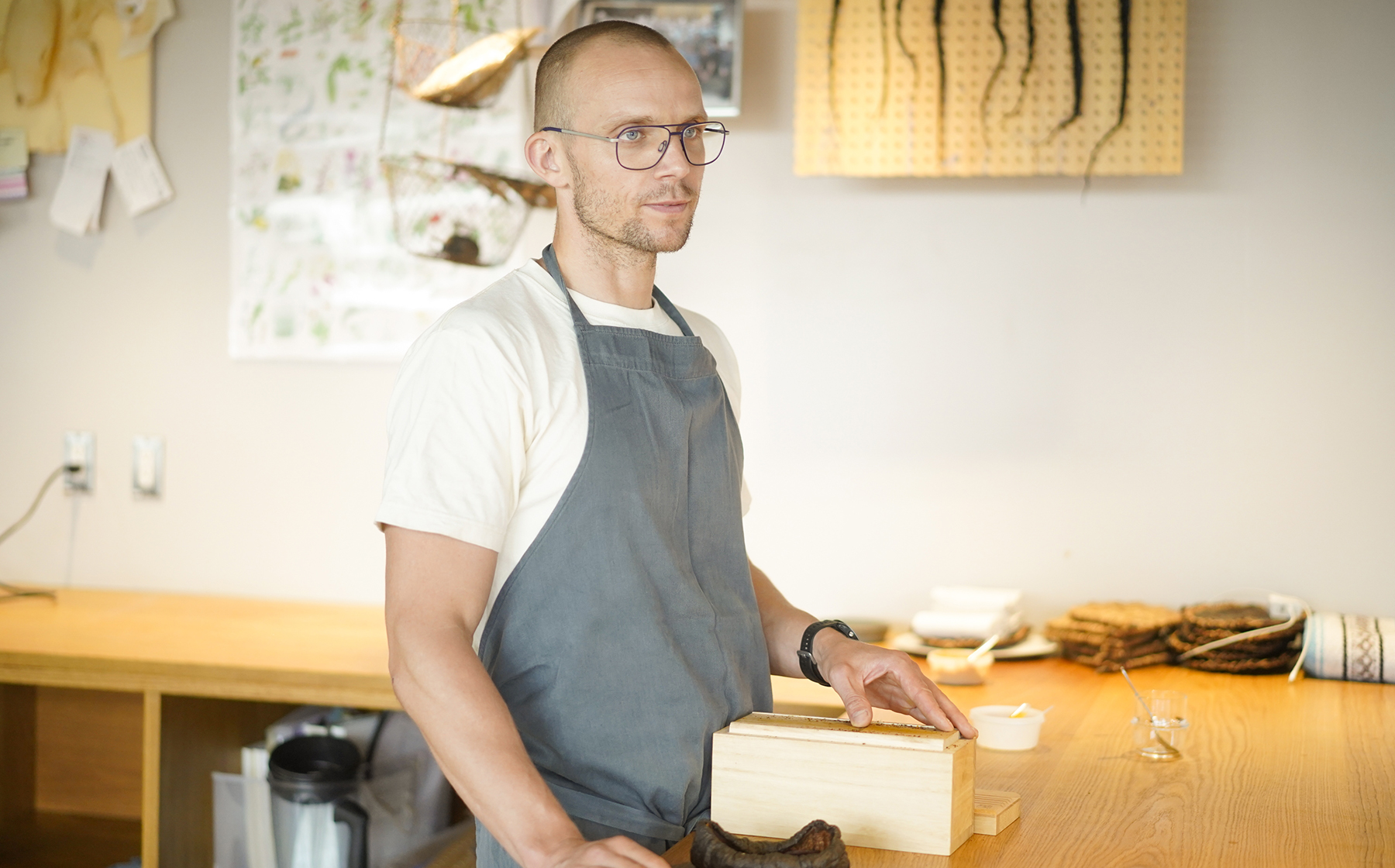

ー
Listening to you today, I sense that you, Mr. Frebel, are someone who deeply respects nature. Have you always felt this respect, even since you were a child, or is it something that has developed since you became a chef?
Mr. Thomas
When I was a child, I really loved to play in nature. However, when I was very young and even during my teenage years, I had no conscious desire to be connected to nature; nature was simply a part of my life.
I think that I acquired my feelings of respect and appreciation towards nature gradually over time after I became a chef.
A chef must be a wonderful job! As “cooks”, we enzymes also want to hone our skills so that we can contribute usefully to cooking!
After speaking with Mr. Frebel, I was very impressed by his curiosity and passion for cooking and fermentation. As someone who handles enzymes routinely, the interview with Mr. Frebel was extremely interesting as there were so many points where I was able to picture in my mind, “That’s probably the action of such-and-such enzyme.”
For example, the enzyme reaction can increase the intensity of the three flavour components by double, 10-fold or even 100-fold, resulting in very complex flavour. I sensed that Mr. Frebel enjoys these changes. If you tried to do the same thing byblending condiments, you would need several hundreds of condiments to achieve the same flavors. In that sense, I greatly admired how well Mr. Frebel is utilizing the enzyme power of koji mold.
We would definitely like to visit INUA’s test kitchento help him develop new recipes and of course taste his new dishes!
Enzymes are active in every aspect of our world, and we are seeking new possibilities for them.
In this corner, we visit people who are currently active in various fields with "Enzo" and ask them about their stories.

